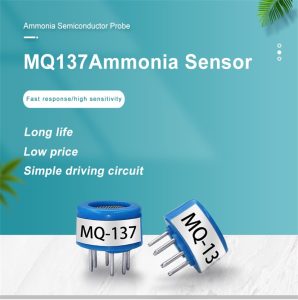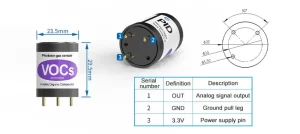-
Types of gas detectors
- Gas detectors are devices that detect and measure the concentration of various gases in the environment. They play a crucial role in many applications, including industrial safety, air quality monitoring, and environmental protection. Gas……
- Chat Online
-
Description
Gas detectors are devices that detect and measure the concentration of various gases in the environment. They play a crucial role in many applications, including industrial safety, air quality monitoring, and environmental protection. Gas detectors are designed to detect specific types of gases, such as carbon monoxide, methane, hydrogen sulfide, and volatile organic compounds (VOCs). In this article, we will explore the different types of gas detectors and their applications.

Fixed gas detectors
Fixed gas detectors are stationary devices that are permanently installed in a particular location. These detectors continuously monitor gas levels and provide real-time data on the gas concentration. They are commonly used in industrial settings to detect and monitor toxic and combustible gases. Fixed gas detectors can be further classified into:
a. Point gas detectors:
These detectors are installed at specific points where gas leaks are likely to occur, such as around valves or pipes. They provide localized gas detection and are highly sensitive and accurate.
b. Open-path gas detectors:
These detectors use infrared beams to detect gases over a distance. They are ideal for detecting gas leaks in large areas or outdoors.
Portable gas detectors
Portable gas detectors are handheld devices that can be carried around and used to detect gas leaks or monitor gas levels in different locations. They are commonly used by professionals working in confined spaces, such as mines, oil rigs, and pipelines. Portable gas detectors can be further classified into:
a. Single-gas detectors:
These detectors are designed to detect one specific gas, such as carbon monoxide or hydrogen sulfide. They are compact, easy to use, and highly sensitive.
b. Multi-gas detectors: These detectors can detect multiple gases simultaneously. They are ideal for situations where there is a risk of exposure to different types of gases.
Wireless gas detectors
Wireless gas detectors are devices that use wireless technology to transmit data to a central monitoring system. They are portable and can be placed in various locations to provide real-time gas detection and monitoring. Wireless gas detectors are commonly used in industrial settings to detect and monitor toxic and combustible gases.
Ultrasonic gas leak detectors
Ultrasonic gas leak detectors use high-frequency sound waves to detect the sound of gas leaks. They are ideal for detecting gas leaks in pressurized systems or pipelines and can detect leaks from a distance.
Infrared gas detectors
Infrared gas detectors use infrared radiation to detect the presence of gases. Each gas has a unique absorption spectrum, allowing the detector to identify and quantify the gas concentration accurately. Infrared gas detectors are ideal for detecting combustible and refrigerant gases.
Electrochemical gas detectors
Electrochemical gas detectors use chemical reactions to detect and measure gas concentrations. They are highly sensitive and can detect gases at low levels. Electrochemical gas detectors are commonly used to detect toxic gases such as carbon monoxide and hydrogen sulfide.

In conclusion, gas detectors play a crucial role in ensuring safety, protecting the environment, and monitoring air quality. There are various types of gas detectors available, including fixed, portable, wireless, ultrasonic, infrared, and electrochemical gas detectors. Each type of gas detector has its advantages and disadvantages, making it suitable for specific applications. The selection of the appropriate gas detector depends on the type of gas being detected, the environment, and the application.
-
Recommend:
-
-
Gas detectors are crucial devices used in various industrie…
-
How do gas detectors ensure industrial safety?
Gas detectors play a crucial role in ensuring the safety of…
-
How Gas Sensors Help Combat Air Pollution?
Air pollution is a pressing global issue that poses signifi…
-
How can gas sensors be used in air quality monitoring?
Air pollution is a significant global concern that affects …
-
 : +86 155 8830 2704
: +86 155 8830 2704 : jxdziot@gmail.com
: jxdziot@gmail.com
